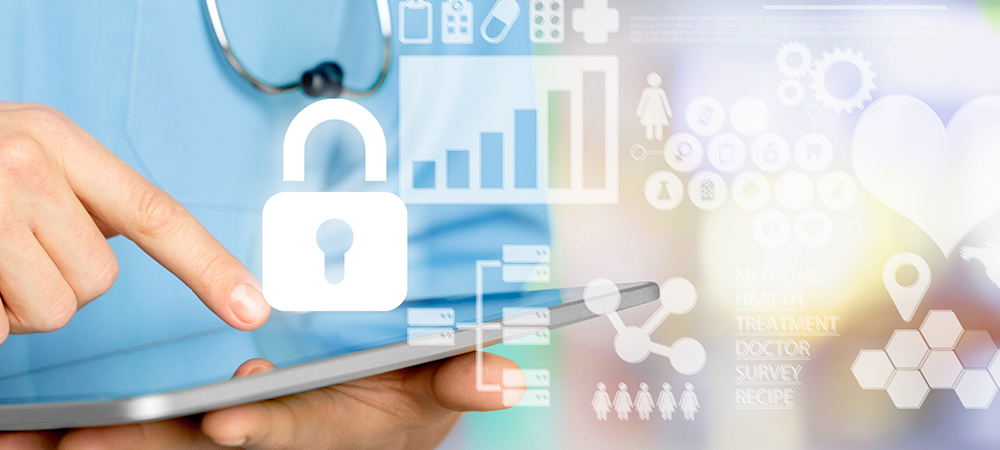Brazil-based Guilherme Araújo, who serves as the Services Director at Blockbit, outlines the key challenges and priorities within the realm of healthcare cybersecurity.

The Digital Revolution in healthcare has brought numerous advantages, such as more precise diagnoses, more effective treatments and greater accessibility to medical services.
However, this transformation has also generated a growing concern: cybersecurity. As healthcare systems become more dependent on technology, the risks of cyberattacks that can severely affect patient safety and the integrity of medical data also increase.
The challenges of making the sector more secure are numerous, including the lack of formal cybersecurity training among healthcare professionals. Doctors, nurses, radiology technicians, and other specialists are trained to care for patients, not to protect IT systems.
However, the current reality demands that they play an active role in defending against cyberthreats. For example, they should take steps to make it harder for cybercriminals to enter the systems by not sharing their passwords with others and being alert to the slightest sign of a possible attack.
This does not refer only to protecting routers and computers. Medical equipment, such as anesthesia machines, infusion pumps, point-of-care systems and MRI machines, are also vulnerable to cyberattacks. A successful attack on these devices can put patients’ lives at risk. Therefore, it is imperative that healthcare professionals are aware of the risks and are trained to take preventive measures.
In Brazil, several cases of invasions have been reported, causing systemic instability and complete digital environment disruption in healthcare companies due to attacks and data hijacking. The attacks were mostly ransomware, with hackers entering peripherals and then critical systems and confidential data.
In June this year, a hospital in Idaho (United States) suffered a cyberattack that forced ambulances to divert to other health centers for over 24 hours. The Idaho Falls Community Hospital, with 88 beds, had its computers compromised, leading doctors and nurses to use manual methods, such as pen and paper, to keep patient records.
Although the hospital was still treating the sick, employees were struggling to fully restore the affected systems. This incident highlights the challenges healthcare companies face worldwide and the damage invasions can cause.
Any breach in systems can result in severe consequences, from compromising patient privacy to the actual risk of injury or death. Healthcare systems store highly sensitive information, such as medical records, insurance details, personal data and even details of surgical procedures.
The recommendation is to be aware of the following risks and dangers related to online data and systems:
Data leakage: The leakage of health information can lead to fraud, identity theft and even blackmail. Medical data is valuable on the market.
Ransomware: Hospitals and clinics can be targets of ransomware attacks, where critical systems are blocked until a ransom is paid. This can seriously impair the provision of healthcare.
Unauthorized access: Doctors and patients rely on the accessibility of medical records, but unauthorized access can result in serious privacy breaches.
Service disruption: Cyberattacks can disrupt the operation of medical equipment, Electronic Health Record (EHR) systems and even hospital power systems.
Protection against cybersecurity threats in the healthcare sector must be a constant priority. For this, training, updated systems and continuous monitoring are essential.
Systems and software must be up-to-date with the latest security patches to avoid known vulnerabilities. If possible, encryption should be implemented to protect the most critical data. In addition, continuous monitoring needs to be part of the routine of companies to analyze, in real-time, system performance and thus be able to quickly detect potential intrusions.
There is no doubt that patient safety is a primary concern for the health community, as cyber-incidents can cause delays in triage and treatment. Healthcare organizations must invest in robust cybersecurity programs and keep systems updated to ensure the safety of patient data and the continuity of health services.
Therefore, it can be said that cybersecurity in the healthcare sector is not an option. It is an urgent necessity, as protecting health data is vital to ensure the well-being of all, as well as the continuity of services and the maintenance of trust in institutions.
Cyberthreats are constantly evolving, and it is everyone’s responsibility – from healthcare professionals to lawmakers and citizens – to collaborate in defending the integrity of healthcare systems and patient privacy. As the popular saying goes, health is not to be taken lightly.
Click below to share this article

